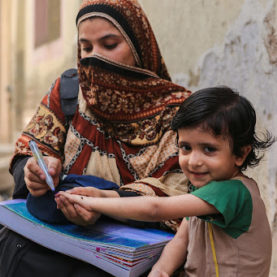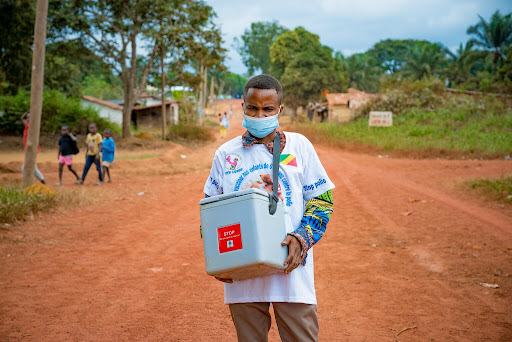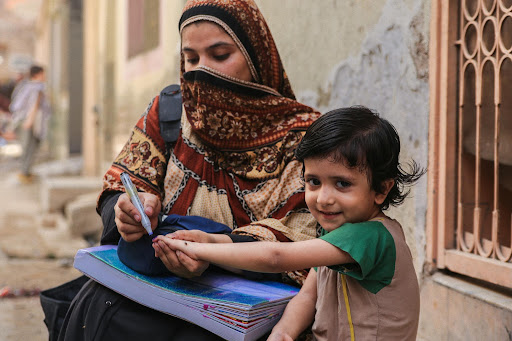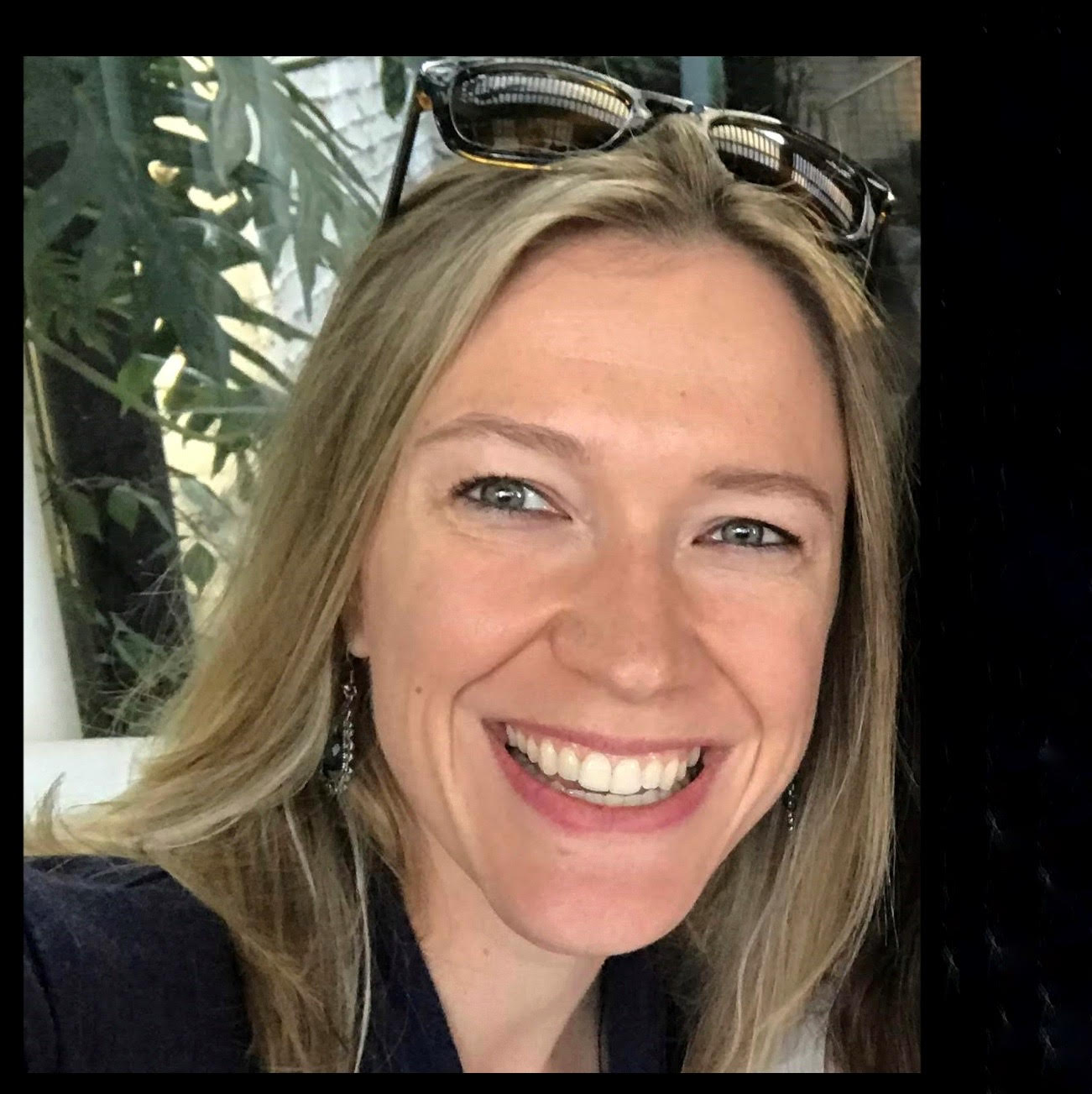World Polio Day: Advocating to Protect Progress Against Polio
The past three decades have been filled with tremendous progress and hope for polio eradication, in addition to enormous setbacks.

The important role of Shot@Life Champions in protecting progress
Shot@Life advocates are important to help ensure that polio can become the second disease ( behind smallpox) to be eradicated in human history. Earlier this month, I had the chance to speak with Shot@Life Champions at the Mobilize to Immunize virtual conference, along with my colleagues Ambassador John Lange and Lori Sloate. At the conference, Ambassador Lange emphasized how we are at a unique point in history – the world is focused on global health and pandemic preparedness, but at the same time, other health programs have suffered. While discussing global health security and pandemic preparedness, it is important to keep in mind how critical immunization is. Last year, we saw the first significant slip in childhood vaccination rates in decades. Over 17 million children did not receive any vaccines at all. Scaling up COVID-19 vaccination is top priority right now, but we cannot allow further backsliding on routine immunizations – like polio and measles. The U.S. government has been a strong supporter of global immunization programs for decades, but congress controls the budget for immunization, and they need to know that these are issues that their constituents care deeply about. Protecting progress on polio and other vaccine-preventable diseases is going to not only take sustained commitment – but increased commitment. This is why your advocacy now is more important than ever.
Three questions to measure progress against polio on this World Polio Day
Let’s look at three questions that help Shot@Life Champions advocate for continued investment in polio eradication: How far has the world come against polio? Where does the fight to end polio stand today? And how does the world end polio for good?

Lebon Chansard Ziavoula/ UNICEF
How far has the world come against polio?
Since the widespread use of the oral polio vaccine began, the majority of the world is not only free of wild polio, but also protected against serious outbreaks of vaccine-derived poliovirus. Innovations in vaccine technology and the expansion of delivery services have isolated wild poliovirus to just two countries. Over the past 10 years, 10 billion doses of the oral polio vaccine have been administered, preventing paralysis in an estimated 6.5 million children. Outbreak prevention in non-endemic countries has been further strengthened by a formidable network of surveillance mechanisms, early reporting systems, and the efforts of 30,000 front-line health workers.

A woman does public outreach for a national vaccination campaign in the Republic of Congo. Photo: Lebon Chansard Ziavoula/ UNICEF
Where does the fight to end polio stand today?
Only Afghanistan and Pakistan remain endemic for wild poliovirus. One of the biggest challenges that the polio program has faced in these countries is not having access to all children. Notably, the Taliban has recently agreed to allow the World Health Organization (WHO) and United Nations Children’s Fund (UNICEF) to conduct a nationwide house-to-house polio vaccination campaign in Afghanistan. The campaign will begin on Nov. 8 and is the first of its kind in over three years whose goal is to reach all children in Afghanistan, including more than 3.3 million who had previously been inaccessible to front-line vaccinators. This is a real opportunity to eradicate polio in Afghanistan — one of the last strongholds of the wild poliovirus.
While wild poliovirus is contained to just those two countries, outbreaks of another form of polio, circulating vaccine-derived poliovirus, or cVDPV, have been spreading. The COVID-19 pandemic has taken a drastic global toll on the provision of essential health services, including polio immunization. Between January 2019 and June 2021, outbreaks were detected in 30 countries, 13 of which were affected by new outbreaks in 2020. While backsliding in childhood vaccine programs is gradually being addressed, deteriorating economic, social, and political situations continue to endanger progress and threaten those most vulnerable. This month, Ukraine reported its first case of vaccine-derived polio since 2016, in an 18-month-old toddler, exposing greater-than-anticipated gaps in vaccination coverage, compounded by aging water and sanitation infrastructure, which have been worsened by regional conflict. The last polio outbreak in Ukraine was in 2015, and it took the country two years to recover. Unfortunately, it’s becoming more evident that it will take more than ending the COVID-19 pandemic to reclaim the progress that’s been made against polio over the past 30 years and deliver on the promise of a polio-free world. As with COVID-19, leaving anyone vulnerable to polio puts everyone at risk.

In Khyber Pakhtunkhwa, Pakistan, a frontline health worker marks the finger of a child who has been immunized against polio. Photo: Faran Tanveer/ UNICEF
How does the world end polio for good?
The world is at a crossroads. While the grim statistics and reports cited here paint a desperate picture for polio eradication, there is still cause for optimism. GPEI has been able to rebound many campaigns in Africa, Asia, and now Europe since the start of the COVID-19 pandemic. The world has seen firsthand how existing supply chains, surveillance systems, and vaccinators of the polio program have played an invaluable role in the global COVID-19 response. According to a GPEI network briefing, an average of 64 million doses of measles vaccine, 7 million doses of yellow fever vaccine, and 4 million insecticide-treated bed nets are delivered alongside oral polio vaccine every year as a result of the joint GPEI-Expanded Programme on Immunization. To build momentum, governments and stakeholders must recommit to eradicating polio and work to integrate the program’s prevention, detection, and response infrastructure into health systems around the world. It’s time to recognize the role of polio eradication in global health security as a whole.
GPEI’s new strategy for 2022-2026 offers the best path forward with a holistic approach, customized to each unique location’s challenges and needs. By boosting surveillance and early reporting mechanisms, digitizing health worker payments, and centering local communities and women leaders, all children can be protected from polio. At the same time, countries and communities will be better equipped to detect and respond to the next pandemic. The GPEI strategy will also help leverage the polio program’s ability to reach children who have never been vaccinated, furthering progress toward important goals set by the Immunization Agenda 2030 (IA2030). The goal of ending polio, although marked by recent setbacks, is within reach. With sustained financial commitment and political will, we can end this deadly disease forever.

